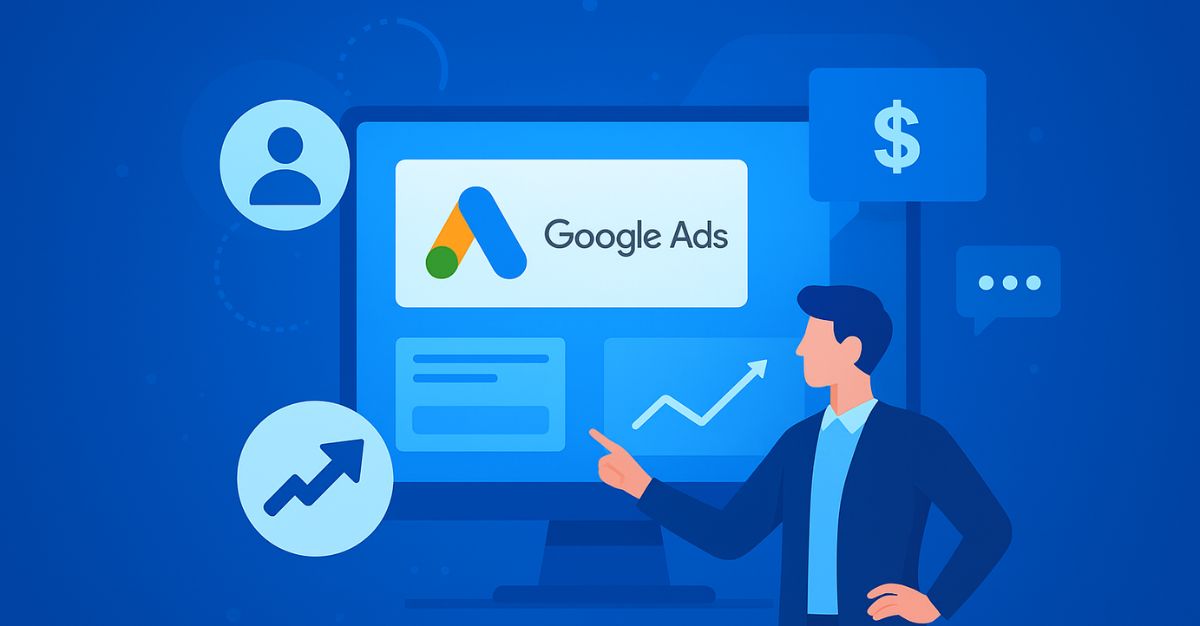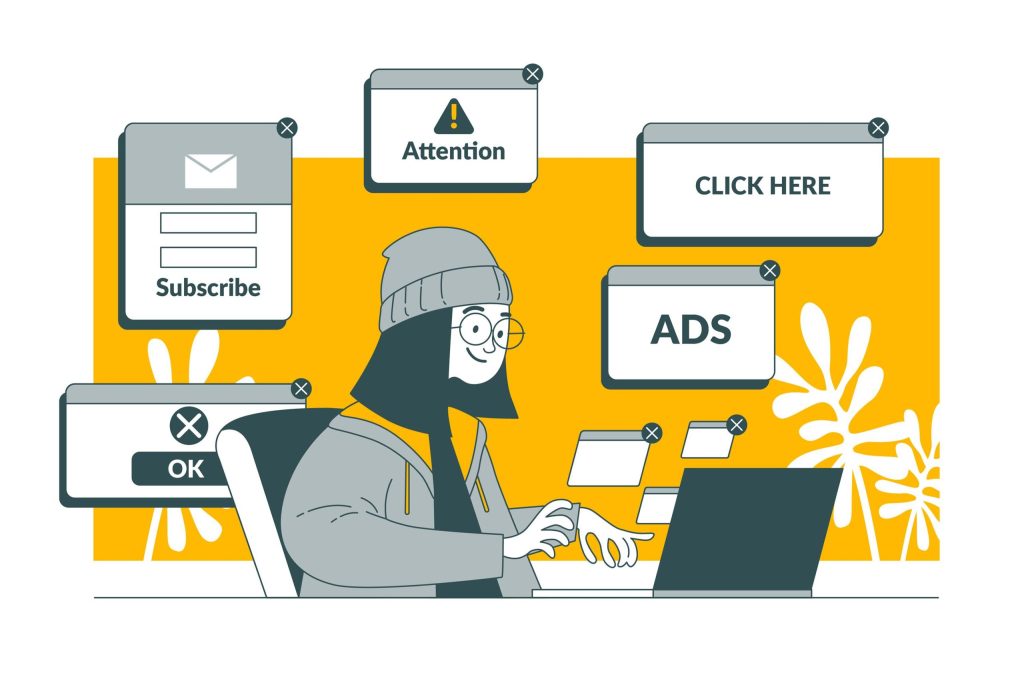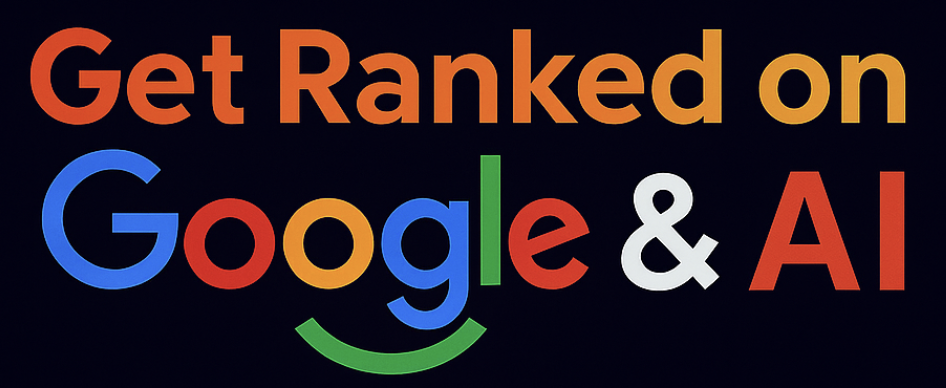Google Ads for B2B lead generation offers a unique chance to attract high-quality prospects and boost ROI by targeting the right audience at precisely the right moment
B2B Google Ads require a more tailored approach to navigate the longer sales cycles, multiple decision-makers, and higher stakes involved in business purchasing decisions.
The purchasing journey can stretch across weeks or months, with buying committees evaluating solutions side by side.
The brilliant part? Google Ads excels at demand capture. When someone searches “cloud-based CRM for financial services,” they’re actively hunting for a solution.
Your ad appears exactly when decision makers need you most.
This guide focuses on generating qualified, sales-ready leads through strategic B2B AdWords campaigns that move the needle on revenue.
Table of Contents
Building Your B2B Sales Funnel with Strategic Campaigns
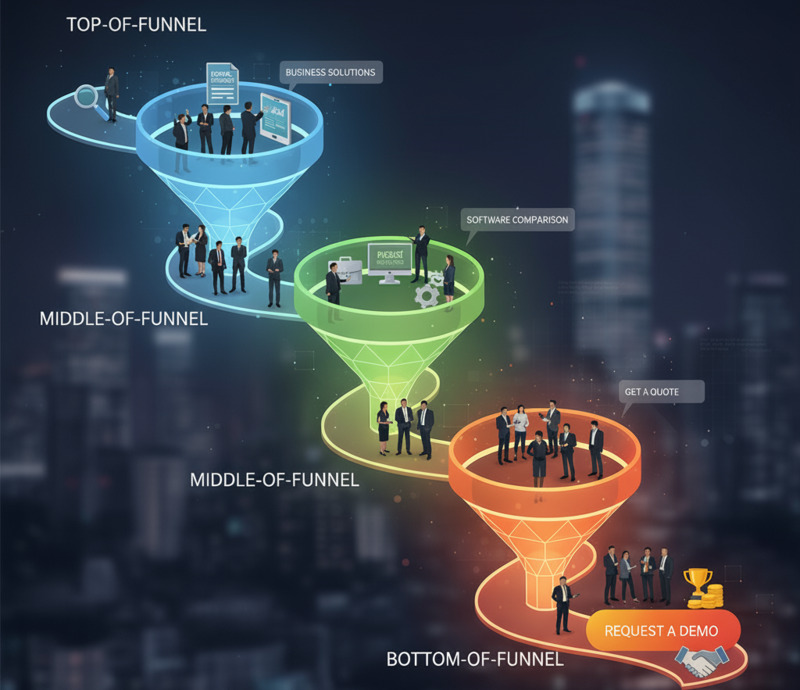
The B2B sales funnel requires precision. Each stage demands different messaging and budget allocation.
a. Top-of-Funnel (ToFu)
The aim here is awareness and engagement. Use offers like whitepapers, eBooks, or research reports.
These educate prospects and start warming them towards your solution.
b. Middle-of-Funnel (MoFu)
Now, focus on nurturing interest. Campaigns should promote webinar sign-ups, case study downloads, or free tools to showcase your expertise and build trust.
c. Bottom-of-Funnel (BoFu)
This stage drives conversions with calls to action such as “Request a Demo,” “Get a Quote,” or “Contact Sales.” These are decision-ready prospects likely to convert into customers.
Segmenting campaigns by funnel stage allows budgeting control and messaging that resonates precisely with the buyer’s needs at each step.
Your bottom of funnel campaigns might run aggressive bidding strategies whilst top of funnel efforts focus on building awareness cost-effectively.
This also improves your quality score through tightly themed ad groups.
Mastering B2B Keyword Strategy That Converts
While B2C campaigns chase clicks, B2B thrives on clarity. A sharp keyword strategy means prioritising intent, eliminating distractions, and investing only where it matters most.
a. Targeting High-Intent Keywords
Generic keywords attract massive search volume but questionable intent. “Project management software” pulls everyone. “Cloud-based project management for remote engineering teams” pulls qualified buyers.
The difference? Specificity converts at significantly higher rates whilst costing less per click.
Use Google Keyword Planner to identify phrases with moderate search volume but clear commercial intent.
The most profitable B2B Google Ads strategies often ignore high-volume keywords entirely.
Look for these commercial intent modifiers:
- “Best” – comparing top solutions
- “Pricing” – evaluating costs
- “Comparison” – weighing options
- “Alternative” – seeking replacements
- “Consultant” – ready to hire expertise
- “Vendor” – procurement stage
Someone searching “Salesforce alternatives for B2B SaaS companies” is actively shopping. Build dedicated ad groups around these exact match keywords.
Competitor keywords deserve strategic attention. Bidding on rival brand names captures prospects in buying mode.
Craft ad copy highlighting your unique advantages. Combine this with strong social proof in ad extensions for maximum impact.
b. The Essential Role of Negative Keywords
One of the fastest ways to drain your budget? Attracting the wrong audience. B2B advertising requires ruthless exclusion of irrelevant traffic.
Add these negative keyword categories immediately:
- B2C indicators: “free,” “cheap,” “personal,” “home use”
- Job seekers: “jobs,” “careers,” “hiring,” “salary”
- DIY searchers: “template,” “how to,” “tutorial”
- Students: “assignment,” “project,” “research paper”
- Unrelated industries that might share terminology
Review your search terms report weekly. A B2B Google Ads agency prunes waste regularly to improve conversion rates.
c. Controlling Costs with Smart Keyword Match Types
Phrase match and exact match keywords give you precision. Broad match might deliver volume, but in B2B Google advertising, quality trumps quantity.
Exact match keywords ensure your ads only appear for the precise terms you’ve selected, maximising relevance.
Crafting High-Converting Ad Copy and Landing Pages
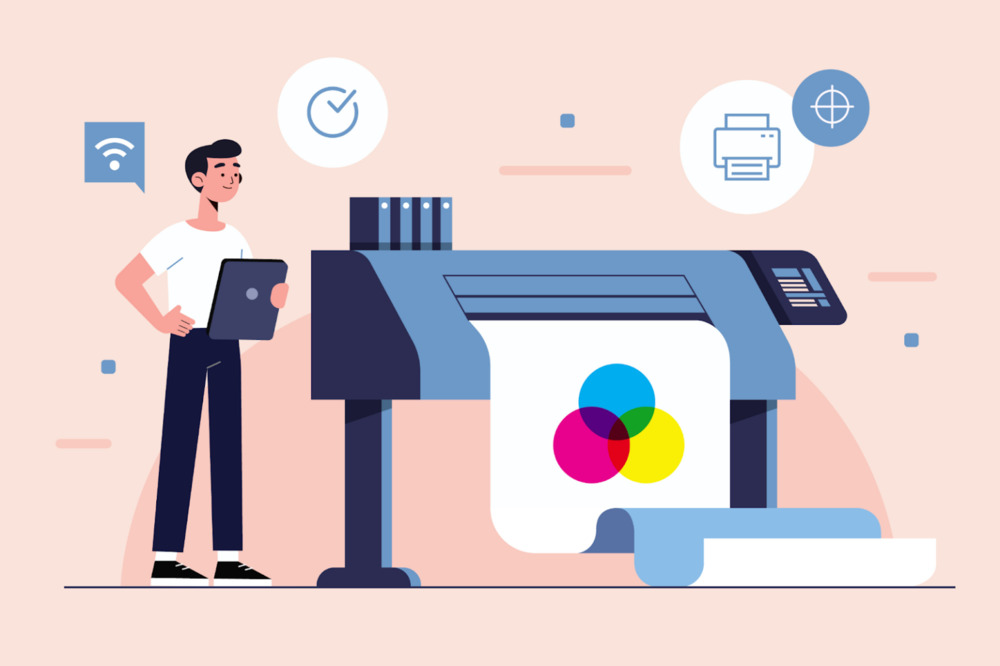
Your ad copy and landing pages must focus on measurable business outcomes and trust. Decision makers need concrete proof before they convert.
1. Writing for Decision Makers
B2B buyers care about results. Skip the fluff and lead with numbers.
a. Examples that convert:
- “Reduce Operational Expenses by 25%” beats “Improve Your Operations”
- “Deploy in 48 Hours vs. 6 Weeks” addresses real pain points
- “Cut Processing Time by 40%” speaks the CFO’s language
Your ad copy gives the buying committee ammunition to justify expenditure to stakeholders.
b. Build trust through ad extensions:
- Sitelink extensions: Client testimonials, industry awards, expertise proof
- Callout extensions: “ISO 27001 Certified,” “99.9% Uptime SLA,” “24/7 Support”
- Structured snippets: Service categories, industry specialisations
This social proof signals credibility before prospects even click through.
c. Match your CTAs to funnel position:
- Top of funnel: “Access Free Guide,” “Download Report”
- Middle of funnel: “Watch Demo,” “View Case Study”
- Bottom of funnel: “Schedule Demo,” “Get Pricing”
Mismatched CTAs destroy conversion rates and waste ad spend.
2. Designing Landing Pages That Convert
Your landing page must mirror the ad copy and keyword intent precisely. Someone searching “compliance management software for healthcare” expects healthcare compliance solutions immediately.
This relevance dramatically impacts conversion tracking metrics.
Consider specialists in web design and development who understand B2B buyer psychology.
Reduce form friction ruthlessly. Every additional field drops conversion rates.
Essential fields only:
- Name
- Company
- Work Email
- Job Title
Your sales team can gather detailed information during follow-up conversations. Test different form lengths to find your sweet spot between quantity and quality.
Advanced Audience Targeting for B2B Lead Generation
Keywords alone won’t cut it. Smart audience targeting helps you reach decision makers at the exact moment they’re evaluating solutions.
a. Leveraging Google’s Audience Tools
Google identifies users actively researching specific business solutions. Layer these targeting options onto your search campaigns for precision.
| Targeting Type | How It Works | Best Use Case |
| In-Market Audiences | Targets users researching “Business Services” or “Software & Technology” | Capture active researchers showing buying signals |
| Custom Intent Audiences | Define specific topics or URLs indicating relevant interest | Target prospects visiting competitor sites or industry publications |
| Geographic Targeting | Focus on cities where ideal customers cluster | Reach specific regions with high conversion potential |
| Demographic Targeting | Prioritise certain job functions or seniority levels | Better on LinkedIn Ads with richer professional data |
Combined with matched audiences, these tools help you reach prospects showing genuine buying signals.
b. Essential Remarketing Campaigns
Segment your retargeting based on behaviour. Someone who viewed your pricing page clearly has strong interest.
Your retargeting message should address common objections or offer an incentive.
Create audiences by engagement level:
- High intent: Viewed pricing, watched demo video, downloaded case study (8+ minutes on site)
- Medium intent: Visited product pages, read multiple blog posts (3-7 minutes)
- Low intent: Bounced quickly or viewed only homepage (under 2 minutes)
These remarketing campaigns typically deliver your lowest cost per qualified lead.
Customer match unlocks strategic targeting. Upload your customer email list to exclude existing clients from acquisition campaigns.
Better yet, create lookalike audiences to reach prospects similar to your best customers.
Customer match connects your CRM data with Google’s targeting capabilities, making your B2B Google Ads management far more sophisticated.
Measuring True ROI Beyond Surface Metrics
To truly master B2B paid advertising, you must move beyond basic digital metrics and connect your ad spend directly to the real-world revenue generated by your sales pipeline.
a. Implementing Offline Conversion Tracking
Here’s what separates amateur B2B AdWords strategy from professional campaigns: offline conversion tracking.
Most B2B sales happen via phone calls, meetings, or lengthy email negotiations. You need to connect these outcomes back to Google Ads.
Integrate your CRM with Google Ads to import data about lead quality, deal stages, and closed revenue. This shows which keywords and campaigns generate actual customers versus mere form fills.
Google Analytics helps with the digital side, but CRM integration reveals the complete picture.
b. Focusing on Revenue-Driven Metrics
In B2B, the true effectiveness of your campaigns is measured not by lead volume, but by the financial metrics that confirm long-term profitability and sustainable growth.
1. Cost Per Qualified Lead Tells the Real Story
Forget vanity metrics. A campaign generating 100 leads at £50 each sounds impressive until you discover only five were qualified prospects.
That’s actually RM 1,000 per qualified lead, potentially unprofitable. Track how leads progress through your sales pipeline to calculate true acquisition costs.
2. ROAS and Lifetime Value Shape Smart Bidding
Return on ad spend and customer lifetime value determine campaign profitability.
A RM500 cost per lead might seem steep until you realise the average deal value is RM50,000 and customers stick around for three years.
Use Target CPA and Target ROAS bidding to let Google’s algorithms optimise towards your most valuable conversions.
Feed conversion value data back so machine learning prioritises high-value prospects.
Explore platforms like Performance Max can automate much of this optimisation across Google’s entire inventory.
c. Building a Complete Digital Marketing Strategy
B2B Google advertising works most effectively as part of a broader approach. Combine paid search with content marketing that establishes thought leadership.
Use video content to explain complex solutions. Leverage SEO services to capture organic traffic alongside paid.
This integrated digital marketing strategy ensures you reach B2B buyers wherever they research solutions.
Turning Clicks into B2B Customers
Running successful B2B Google Ads campaigns requires fundamentally different tactics than consumer advertising.
You’re targeting smaller audiences with higher lifetime value, longer consideration periods, and complex decision-making processes.
Success comes from precise keyword targeting, compelling business-focused messaging, sophisticated audience segmentation, and rigorous measurement of genuine business outcomes.
The most profitable campaigns obsess over lead quality rather than sheer volume.
Need expert guidance on optimising your B2B Google Ads strategy?
Contact Newnormz to discuss how we can help you generate higher-quality leads and maximise your return on investment.
